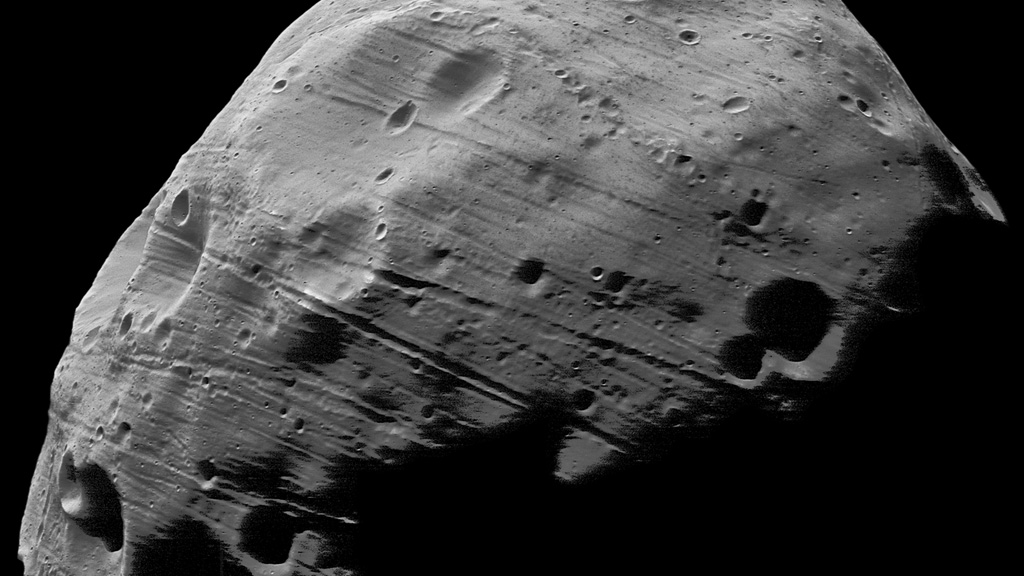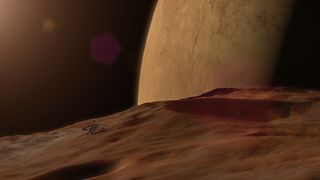Planets and Moons
ID: 12079

Mars’ moon Phobos is lined with shallow grooves that stretch across its surface. These grooves were long thought to be fractures caused by the impact that formed a five-mile diameter depression on the moon known as Stickney crater. Now, new modeling supports the view that the grooves are more like "stretch marks" produced by tidal forces, the mutual gravitational pull of the planet and the moon. Orbiting a mere 3,700 miles above the surface of Mars, Phobos is closer to its planet than any other moon in the solar system. As the moon circles Mars, the planet’s gravity draws Phobos inward. Scientists have found these forces acting on Phobos are so strong, they produce more than enough stress to fracture its surface. It's expected that the moon will fall apart in 30 to 50 million years. Watch the video to see a 360-degree view of Phobos.



Falling Apart




Related Story
For More Information
Story Credits
Please give credit for this item to:
NASA's Goddard Space Flight Center
Video courtesy of ESA/DLR/FU Berlin
Stickney crater image courtesy of NASA/JPL-Caltech/University of Arizona
Other images courtesy of ESA/DLR/FU Berlin/G. Neukum
NASA's Goddard Space Flight Center
Video courtesy of ESA/DLR/FU Berlin
Stickney crater image courtesy of NASA/JPL-Caltech/University of Arizona
Other images courtesy of ESA/DLR/FU Berlin/G. Neukum
Short URL to share this page:
https://svs.gsfc.nasa.gov/12079
Keywords:
NASA Science >> Planets and Moons
SVS >> App
https://svs.gsfc.nasa.gov/12079
Keywords:
NASA Science >> Planets and Moons
SVS >> App








